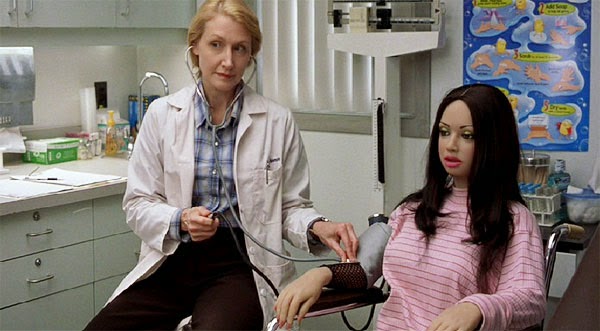In Defense of Lars

It’s audacious, really, to juxtapose mental illness and sex toys. But audacity pays off in this one.
Mental illness is still very misunderstood in our society, and often people fear being around people who show any sign of it. The things that are most unknown are often the things most uncomfortable and challenging to welcome into our lives. You could even say mental illness is as uncomfortable as your brother bringing a blowup doll to Sunday dinner and telling you all about her job as a nurse and how amazing her friends are…
Exactly.
No, this is not a movie about a sadistic guy who carries out his sexual fantasies with a blowup doll. Rather, the movie unfolds into a beautiful love story between the main character and the people in his community.
There is a distinctly memorable scene in the beginning where Lars and Bianca sit on a couch across from his brother and sister-in-law and he introduces them to his new “girlfriend.” The scene perfectly captures just how uncomfortable the whole premise is to both the characters and to the viewer.

The justifications for marginalizing people that battle mental illness often feel sensible on the surface. What’s amazing about this movie, though, is that it allows you to feel awkward and justify the reasons why Lars is wrong in his actions and coping mechanisms, but it doesn’t leave you there.
The film forces the viewer into a vulnerable, uncomfortable position being front and center to Lars’ new relationship, and then naturally guides the viewer from a place of judgement into a place of compassion. By the end, the viewer realizes it was never about the doll – the doll was just an extreme form of symbolism. It was always about the power of love and grace, both on the giver and the receiver.

Lars’ brother and sister-in-law have strong yet polarized views about how to best to help him. Both genuinely want good things for Lars and care deeply about his well-being. The brother wants him to fit in with society and have a successful life by moving past his “mess” and getting over his social anxieties.
The sister-in-law, on the other hand, believes the best way to help him is to enter into the proverbial mess with him. She offers to host Bianca and have her stay at her house while she is “visiting.” She gives Bianca some of her clothes, and offers to help take her places. She asks questions, and she never tells Lars he is wrong or crazy. She persists patiently.
Because the community genuinely cares about Lars, and Lars genuinely cares about Bianca, the townspeople realize that the best way to care for Lars is to care about Bianca, too. So they take her to ladies groups and book clubs. They extend invitations to both Lars and Bianca to come to church on Sundays and attend holiday parties. As the community pours more and more into Lars and Bianca, Lars sees less of a need for her and gradually distances himself emotionally from her, eventually leading to her sickness and “death”.

One of the most simple yet profound scenes takes place in the living room. Bianca is sick and in the hospital, so a number of ladies from the town bring over casseroles. They all sit around Lars, knitting and doing needlepoint. As Lars looks around the sewing circle, he asks, “Um, is there something I should be doing right now?” The women respond, “No, dear. You eat. We came over to sit. That’s what people do when tragedy strikes. They come over, and sit.”
The movie is full of sweet, simple moments like this one where love is the bridge that connects people and communities, and becomes a vessel for healing and hope.
And in the end, love never fails. It always wins.
